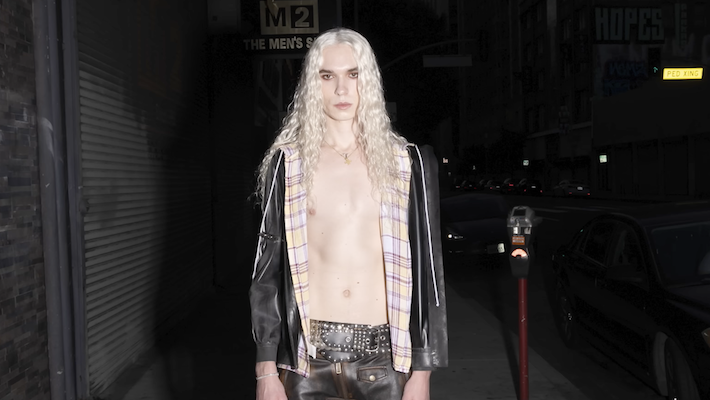
All-powerful Nike is sweating. Rivals are running up impressive revenue while its stock slides, driving internal panic and its worst performance in nearly three decades.
But it’s not adidas and New Balance who have Nike so concerned. Instead, the Swoosh is being chased down by upstart running companies HOKA and On.
Analysts have pointed out that, while Nike’s market share has slowed its pace throughout 2024, HOKA and On have gained tremendous ground, speeding towards big-time expansion as they dash through Wall Street.
From the perspective of Nike’s core sneakerhead clientele it must boggle the mind. How could the shoes they once called “ugly” topple a sportswear goliath?
Let’s take a step back to 2012, when Nike released the Flyknit Trainer, for a little context.
Nike’s bullet-sleek running shoe was the ultimate balance of streamlined steeze and cutting-edge tech, making the clunky running sneakers of the day look positively prehistoric.
Yes, the early 2010s was an era of streamlined runners, when thin was in. And the Flyknit Trainer symbolized Nike’s massive lead. No other brand came close in either style or substance.
However, the industry has endured the ultimate tortoise and hare judo flip: Now, girth gets gold.
HOKA and On quietly built billion-dollar brands by eschewing fashion trends and doubling down on their proprietary tech. Founded in 2009 and 2010, respectively, they first secured the trust of real-deal athletes — On even notched Roger Federer as an investor — staying in their lane until the culture came calling.
Their paths to success mirrors the trail that Nike itself blazed many decades ago, though the process has sped up (not unlike a runner hitting a high).
HOKA’s rise can be traced to only a decade ago, or so. Prior to the COVID-19 pandemic, HOKA (then called HOKA ONE ONE) was by runners, for runners.
But, in 2018, an explosively popular Engineered Garments collaboration established HOKA as a contender in the field of stylish trail footwear — this is pre-GORPcore, remember.
This kind of surprise visibility aligned HOKA with canny fashion insiders who actually know what’s up next. Its first runway appearance came in Nicola Formichetti’s 2018 NICOPANDA runway show, for instance, and its hefty sneakers soon infiltrated the rotations of tastemakers like Virgil Abloh.
By 2020, HOKA was cool because it wasn’t cool. Nike was cool. HOKA was for dads. Which is what made HOKA cool.
HOKA’s fashion acceptance at least partially helped normalize its shoes in a more mainstream context. Running culture boomed in the wake of the pandemic, part of a societal craving to not just get outside but enjoy the outside.
As such, athleisure became uniform, leggings became pants, and HOKA’s cushy runners became everyone’s daily walkers, so much so that its elderly aesthetics have been appropriated by big-box retailers and American market analysts are currently gushing over the “HOKA hype.”
HOKA’s rise was cemented in summer 2024, when it opened its first flagship store on New York’s 5th Avenue, a five-minute jog from one of the biggest Nike stores in America.
On’s success, meanwhile, is at least partially fueled by how it was adopted into that utilitarian athletics market, converting customers who might not commit to a daily jog but do want easy comfort-first daily shoes.
Though On does make top-tier running sneakers, its most ubiquitous silhouettes are styles like the Cloud 5, a not terribly aesthetic walker that is nevertheless outrageously popular. Secret to success? It’s low-profile, not terribly pricey, quite cushioned, and a stealth slip-on that never needs to be unlaced. Thus, it’s become the ultimate dad shoe actually worn by dads.
Like, none of the world’s Joe Schmos are wearing “cool” dad shoes; they’re wearing these On shoes. And they’re wearing them en masse, even though these are newly mainstream brands — though HOKA is estimated to be recognized by one in three running shoe shoppers, On is only recognized by 18 percent of them.
Crazy as it sounds, Nike doesn’t really have an answer to this.
Though it famously makes running shoes, and tons of them at that, Nike hasn’t really hit on anything that scratches that unassuming itch, which is part of the reason why companies like HOKA are eating into its market share.
Part of what’s so fascinating about this niche is that its success stories are rarely the most visible ones. For instance, Nike’s Air Monarch, the ultimate dad shoe, was once reportedly a top-selling sneaker and tapped into that coveted “so uncool that it’s cool” niche. But once it became an accidental streetwear icon, even remixed by Martine Rose, it lost that luster.
Still, marketing tools can also be utilized to bridge the gap, like when On smartly made Zendaya a brand ambassador in 2024.
This move checked more than a few boxes: For one, widely admired Zendaya is a perfect avatar for the young athleisure-leaning demo, for whom fitness is fashion.
This in turn normalizes On to folks potentially put off by the brand’s dad aura, in the similar way that Abloh’s HOKA adoption made the brand appealing to sneakerheads.
Now, to be clear, no one is actually beating Nike. Not yet, at least.
As recently as late 2023, Nike was being touted as the world’s most valuable apparel brand and the world’s most popular sneaker brand. It is still the king of sportswear.
But the revolution may already be here.



